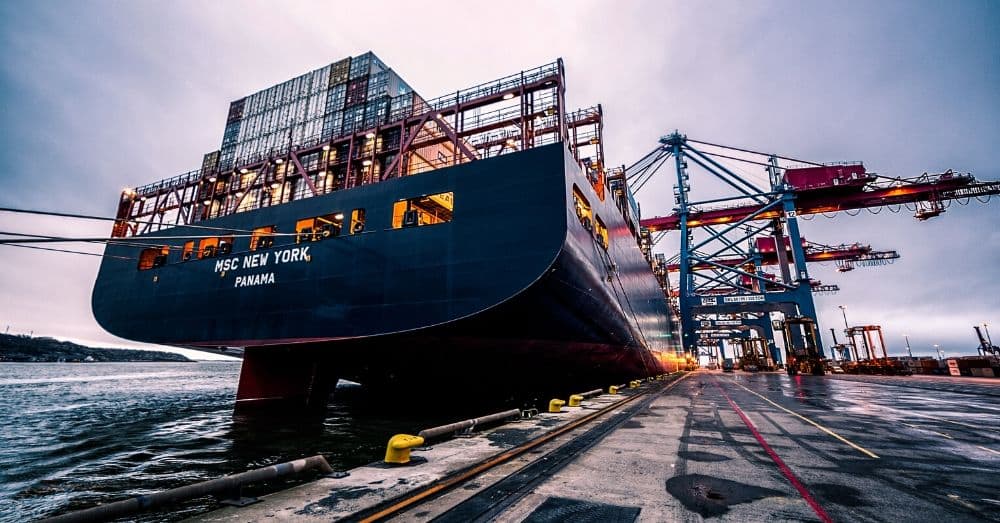
9 Facts You Need to Know About Mandatory Cargo Weighing Law
4-minute read
As advised earlier and as constantly reported in industry press the new Mandatory Cargo Weighing Laws has become effective around the globe.
This law is referred to as V.G.M. or Verified Gross Mass, when a ship will not load a container anywhere in the world without a declared VGM.
1. NZ Ports will NOT Offer Weighing Service
The ports in New Zealand will not be offering a container weighing service although this may vary at some inland ports where weighbridges are available.
A new web-based portal call Port Connect is being developed across all New Zealand ports. This will be used to convey the VGM data from the exporter or his agent to the Port.
Hard copy documents or copies of weight bridge certificates will not be permitted to convey the VGM data to the port. There will be a charge created around the use of the Port Connect Portal.
2. Do Not Delay and do It in Advance
In New Zealand, the VGM is required to be lodged at the Port where the cargo is to be loaded and in advance of the container arriving at the port gate. If not then the truck will be turned away.
Containers carried by coastal shipping (other that RORO including Cook Strait Ferries) will still require the VGM lodged at the first load port.
3. Exporter is Responsible to Declare VGM
In all cases, the declaration of the VGM is the responsibility of the exporter of the container. The exporter is regarded as the party shown as the ‘Shipper’ or ‘Consignor” on the Bill of Lading. The exporter can nominate a third party such as Easy Freight to report the VGM on their behalf although there must be a clear ‘commercial’ relationship documented between the parties in case an audit is required. We will be in touch further about this.
The exporter can nominate a third party such as Easy Freight to report the VGM on their behalf although there must be a clear ‘commercial’ relationship documented between the parties in case an audit is required. We will be in touch further about this.
Weights declared at the time of booking and weights declared for the purpose of the Bill of Lading are not necessarily the VGM. In all cases, the VGM is only the confirmed gross laden weight of the container.
4. Cargo Weight Can be Verified in Two Ways
There are two ways that the VGM can be determined:
Method 1: Requires the whole container to be weighed once packed and the doors are sealed.
Method 2: Requires the individual items for packing to be separately weighed and this amount is to be added to confirmed weight of any packing materials, dunnage, pallets, etc. and then added to the tare weight of the container. The sum of all that becomes the VGM under Method 2. NB if packages are already pre-weighed with a certified weight stamped on the packaging then they do not have to be weighed again
The sum of all that becomes the VGM under Method 2. NB if packages are already pre-weighed with a certified weight stamped on the packaging then they do not have to be weighed again
When using Method 2 exporters can obtain the tare weight of the container from the details printed on the side of the container or shipping lines are now developing web systems which will allow customers to look up the tare weights of the containers.
5. Extra Costs Will be Charged to the Exporter
Similar to road deliveries any containers carried by rail will need a VGM lodged with the port before cargo arrival. Any containers arriving at the port without a VGM will be turned around and dispatched back to their journey load point.
Costs for this and handling at the port will be charged to the exporter.
6. What is the Fee to Organise VGM?
If you do not have your own tools then please allow about $100-$200 per container depending on how urgent it is.
7. Exporters must be able to Prove How They Calculate VGM
In all cases, the exporter is required to have a documented process like ISO to show which VGM weighing method they use and to prove how their VGM was calculated whether using Method 1 or Method 2. Exporter’s staff are also required to be trained in the VGM process.
The person lodging the VGM is required to be an ‘ authorised person’ and we expect to have more details on this soon.
8. Only Certified Devices will be Qualified to Weigh Cargo
Locally Maritime New Zealand is responsible for the enforcement of VGM and MBIE (Ministry of Business Innovation and Employment) are responsible for the certification of all weighing devices in accordance with the Weights and Measures Act. Only weigh devices that are certified by MBIE will be qualified to weigh cargo and containers relevant to VGM.
Maritime NZ has not yet advised the consequences for inaccurate VGM information however by law they will have to enforce compliance and apply penalties at some stage. We expect to hear more on this in due course.
We will send a separate message regarding the arrangements and process for LCL cargo very shortly as this is still being worked through. LCL cargo will still require a VGM however.
9. The Law does not Apply to Import Shipments
This new law does not affect import cargo. Import containers arriving into New Zealand will carry with them the VGM declared by the exporter in the country of origin. This information is transmitted through electronic bay plan files that travel between ports in advance of the ships arrival.
We’d love to answer any of your questions! Contact us now
P.S. Do you know of other people that will find this article useful? Please share it on social media. Thank you!
